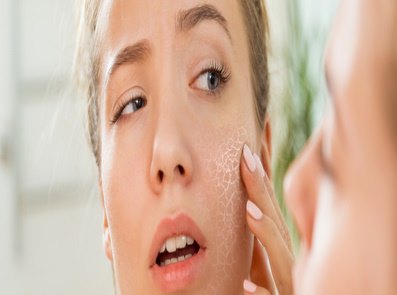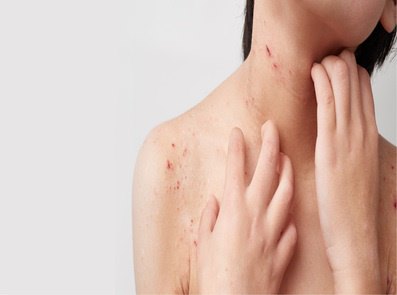Treclin®
Prescribing Information
PRESCRIBING INFORMATION
Treclin® 1 %/0.025 % w/w/gel
(clindamycin/tretinoin)
Please refer to Summary of Product Characteristics (SmPC) before prescribing.
Indications: For the topical treatment of acne vulgaris when comedones, papules and pustules are present in patients 12 years or older.
Presentation: Each gram of gel contains 10 mg (1%) clindamycin (as clindamycin phosphate) and 0.25 mg (0.025%) tretinoin.
Dosage and administration: Adults and adolescents (≥ 12 years): Once daily at bedtime the entire face should be washed with mild soap and dried. A pea-sized amount of medication should be squeezed onto one fingertip, dot onto the chin; cheeks, nose, and forehead, then gently rub over the entire face. Treatment with Treclin should not exceed 12 weeks of continuous use without careful evaluation. Treclin is not recommended for use in children below 12 years of age and the elderly >65 years of age. Treclin is indicated for external (dermatological) use only. The application of Treclin should avoid eyes, eyelids, lips and nostrils. After the application the patient should wash hands.
Contraindications: Treclin is contraindicated in pregnancy or in women planning a pregnancy. It is also contraindicated in patients who have a history of hypersensitivity to the active substances clindamycin and/or tretinoin or to any of the excipients or lincomycin; in patients with regional enteritis, ulcerative colitis, or history of antibiotic-associated colitis; in patients who have a personal or familial history of skin cancer; in patients who have a history of acute eczemas, rosacea and perioral dermatitis; and in patients with pustular and deep cystic nodular acne varieties (acne conglobata and acne fulminans).
Warnings and Precautions: Treclin is not for oral, ophthalmic, intranasal or intravaginal use and is not recommended in treatment of mild acne vulgaris. Contact with the mouth, eyes and mucous membranes and with abraded or eczematous skin should be avoided. Application to sensitive areas of skin should be made with caution. In the event of accidental contact with the eyes, bathe with large amounts of water. Use of more than the recommended amount or too frequent application may cause redness, stinging and discomfort. If severe irritation occurs, especially in the early stage of therapy, patient should be advised to discontinue temporarily or reduce the frequency of application. Treclin should be prescribed with caution in atopic subjects. Treclin should not be applied at the same time as other topical preparations (including cosmetics) because of possible incompatibility and interaction with tretinoin. Particular caution should be exercised in the use of keratolytic agents such as sulphur, salicylic acid, benzoyl peroxide or resorcinol and chemical abrasives. If the patient has been treated with such preparations, the effect of the peeling agents must subside before any commencement of Treclin therapy. Some medicated cleansers and scrubbing solutions have a strong drying effect. They should not be used in patients receiving tretinoin topical therapy. Abrasive soaps, soaps and cosmetics as well as spices or lime should be used with caution. Because of increased susceptibility to UV radiation, photosensitivity may occur during treatment. Exposure to sunlight should therefore be minimised by using appropriate apparel and sunscreen products with a SPF of at least 30, together with suitable protective apparel (e.g. a hat), should be used. Use of sun lamps or sun beds should be avoided during treatment and patients with sunburn should not use this product until recovered. Occasional gram-negative folliculitis has been reported during treatment with clindamycin 1% topical products. If this should occur, therapy with Treclin should be discontinued and alternative therapy should be initiated. Long-term use of clindamycin may cause resistance and/or overgrowth of non-susceptible dermal bacteria or fungi, although this is a rare occurrence. Cross resistance may occur with other antibiotics such as lincomycin or erythromycin. Simultaneous use of oral and topical antibiotics should be avoided, particularly if chemically different. The excipients methyl parahydroxybenzoate (E218) and propyl parahydroxybenzoate (E216) may cause allergic
reactions (possibly delayed). The excipient butylhydroxytoluene (E321) may cause local skin reactions (e.g. contact dermatitis), or irritation to the eyes and mucous membranes. The excipient polysorbate 80 (E433) can cause allergic reactions.
Interaction with other medicinal products: Concomitant topical medication as well as medicated soaps and cleansers that have a strong drying effect and products with high concentrations of alcohol as well as astringents should be used with caution. The concomitant treatment with corticosteroids should be avoided. Clindamycin in
combination with vitamin K antagonists have been reported to show increased Coagulation tests and/or bleeding, therefore, should be frequently monitored in patients treated with vitamin K antagonists (e.g. warfarin, 2 acenocoumarol and fluindione). Tretinoin causes enhanced permeability for other topically applied medicinal agents.
Pregnancy and lactation: Treclin should be given to women of childbearing potential only if effective contraception is used during treatment and for 1 month after discontinuation of treatment. Treclin is contraindicated in pregnancy, or in women planning a pregnancy. If the product is used during pregnancy, or if the patient becomes pregnant while
taking this drug, treatment should be discontinued. It is not known whether tretinoin and clindamycin are secreted in breast milk following the use of Treclin.
Therefore, Treclin should not be used in women who are breast-feeding.
Effects on ability to drive and use machines: It is unlikely that treatment with Treclin will have any effect on
the ability to drive and use machines.
Undesirable effects: Rare: Hypersensitivity, hypothyroidism, headache, eye irritation, gastroenteritis, nausea, dermatitis, herpes simplex, macular rash, skin bleeding, skin burning sensation, skin depigmentation, skin irritation. Application site reactions such as irritation, swelling, erosion, discolouration, pruritus, desquamation,
feeling hot, pain. Uncommon: May include acne, dry skin, erythema, seborrhoea, photosensitivity reaction, pruritus, rash, exfoliative rash, skin exfoliation, sunburn. Application site reactions such as burning, dermatitis, dryness, erythema.
For a complete list of warnings and adverse reactions, you should consult the Summary of Product Characteristics.
Legal category: POM Marketing Authorisation Number: PL 46302/0192 MAH: Mylan Products Ltd, Station Close, Potters Bar,
Hertfordshire, EN6 1TL, UK NHS price: 30g at £11.94 Date of Revision of prescribing information: April 2025
Veeva Reference: UK-TRE-2024-00043
The SmPC for this product, including adverse reactions, precautions, contra-indications, and method of use can be found at:
http://www.mhra.gov.uk/Safetyinformation/Medicinesinformation/SPCandPILs/index.htm and from Mylan Medical Information,Building 4, Trident Place, Hatfield Business Park, Mosquito Way, Hatfield, Hertfordshire, AL10 9UL, phone no. 01707 853000, Email: info@viatris.com
|
Please report suspected adverse drug reactions (ADRs) to the MHRA through the Yellow Card scheme. You can report via: Alternatively, you can report suspected adverse drug reactions to the Yellow Card scheme by calling 0800 731 6789 for free, Monday to Friday between 9am and 5pm. You can leave a message outside of these hours. When reporting please provide as much information as possible. By reporting adverse drug reactions, you can help provide more information on the safety of this medicine. |

